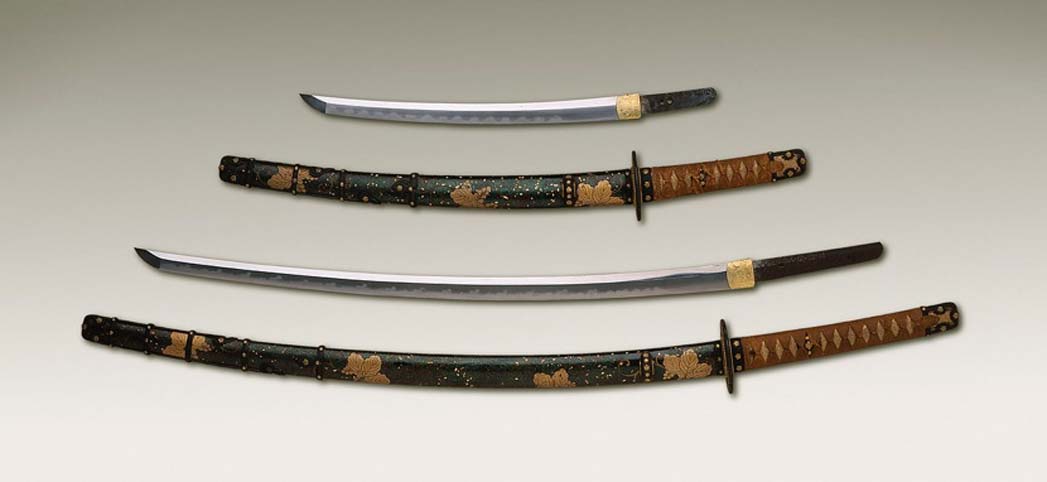The Katana, a quintessential symbol of the Japanese Samurai sword, encapsulates the soul of a nation’s martial heritage and the embodiment of a warrior’s code. In this exploration, we embark on a journey to unravel the mystique surrounding the Katana, delving into its historical significance, the intricate craftsmanship behind its creation, and the enduring cultural legacy it carries.
The Historical Tapestry: Origins and Evolution of the Katana
The evolution of the Japanese Samurai sword, leading to the iconic Katana, weaves a historical tapestry rich in martial prowess and cultural significance.
Early Forms:
The earliest incarnations of Japanese swords date back to the Jokoto period (pre-900 AD). These early blades, inspired by Chinese and Korean designs, were straight and single-edged, reflecting the martial influences of the time.
Emergence of the Katana:
The Kamakura period (1185–1333) marked a turning point in the evolution of the Samurai sword. The need for a more versatile and lethal weapon led to the creation of the curved blade, giving birth to the Katana. Its design allowed for swift and precise strikes, adapting seamlessly to the evolving combat techniques of the Samurai.
Symbolism and Spirituality:
The Katana transcended its role as a tool of warfare; it became a symbol of the Samurai’s soul. The forging process was not merely a craft but a spiritual endeavor, with each blade embodying the principles of Bushido—honor, loyalty, and self-discipline.
Crafting the Katana: Melding Tradition with Metallurgy
The creation of a Katana is a meticulous process, blending traditional craftsmanship with metallurgical precision.
Metallurgical Alchemy:
The choice of steel, specifically Tamahagane, sets the foundation for the Katana’s quality. Tamahagane, smelted from iron sand, possesses the ideal balance of hardness and flexibility. The folding technique, a hallmark of Katana forging, refines the steel, ensuring purity and creating the mesmerizing grain pattern on the blade known as Hada.
The Dance of Fire and Ice:
Differential hardening is a crucial step in the Katana’s creation. The blade, coated with a special clay mixture, undergoes a carefully controlled heat treatment. This process results in varying cooling rates, creating a razor-sharp edge and a resilient spine. The result is a blade with unparalleled sharpness and durability.
Tsuka and Aesthetic Flourishes:
The assembly of the Katana involves fitting the blade into the Tsuka, the handle. The Tsuka, often wrapped in materials like ray skin and silk or cotton cord, is not just a functional component but an opportunity for artistic expression. The Tsuba, or handguard, and other fittings further enhance the Katana’s aesthetic appeal.
The Cultural Resonance of the Katana
Beyond its martial utility, the Katana resonates deeply within Japanese culture, embodying aesthetic elegance and philosophical depth.
Bushido Code:
The Katana is a living embodiment of the Bushido code. Each strike with the blade becomes a manifestation of honor, loyalty, and self-discipline. The Katana serves not just as a weapon but as a constant reminder of the principles governing the Samurai way of life.
Aesthetic Elegance:
The design of the Katana is a testament to Japan’s appreciation for beauty. The graceful curvature of the blade, the intricate details of the Tsuka, and the artistic elements of the Tsuba collectively contribute to the Katana’s aesthetic allure.
Ceremonies and Traditions:
The Katana plays a pivotal role in various Japanese ceremonies, from weddings to martial arts rituals. Its presence symbolizes protection, strength, and a connection to the cultural heritage deeply ingrained in the nation’s identity.
The Katana in Contemporary Context
In an era dominated by technological advancements, the Katana maintains its relevance and fascination.
Cinematic Legacy:
The Katana has become an iconic symbol in global cinema, featured prominently in samurai epics and modern action films alike. Its portrayal on the silver screen magnifies its cultural and historical significance.
Collector’s Passion:
Enthusiasts and collectors worldwide covet authentic Katanas. These blades, whether antiques passed down through generations or modern interpretations crafted by skilled artisans, are prized possessions that transcend their functional nature.
Martial Arts and Modern Training:
The Katana Sword remains integral to traditional martial arts training, offering a link to centuries-old disciplines. Even in modern combat training, the Katana’s techniques continue to be studied, preserving the artistry and practicality of the blade.
Challenges and Preservation Efforts
Despite its enduring legacy, the Katana faces challenges in preserving its traditional craftsmanship and authenticity.
Diminishing Artisans:
The number of master swordsmiths with the expertise to craft authentic Katanas is declining. Efforts are underway to pass on this specialized knowledge through apprenticeship programs and educational initiatives.
Commercialization and Imitations:
Mass production and the influx of imitations pose challenges to maintaining the authenticity of handcrafted Katanas. Distinguishing between genuine craftsmanship and replicas requires discernment and awareness.
Future Horizons: Sustaining the Katana Tradition Sword
https://www.truekatana.com/catalog/japanese-samurai-swords/katana
As the guardians of the Katana tradition navigate challenges, innovative approaches and global collaboration offer hope for the blade’s continued legacy.
Fusion of Tradition and Innovation:
Contemporary swordsmiths are exploring innovative approaches to Katana making. The incorporation of modern materials and techniques aims to preserve tradition while adapting to contemporary needs.
Cultural Education and Awareness:
Initiatives to educate the public about Katana craftsmanship and its cultural significance are gaining momentum. Museums, exhibitions, and cultural exchanges contribute to raising awareness and fostering a deeper appreciation for the artistry behind the blade.
Global Recognition:
The international recognition of the Katana Sword as a cultural and historical treasure ensures its story transcends geographical boundaries. Collaboration between nations and cultural institutions plays a crucial role in preserving the legacy of the Katana.













Leave a Reply